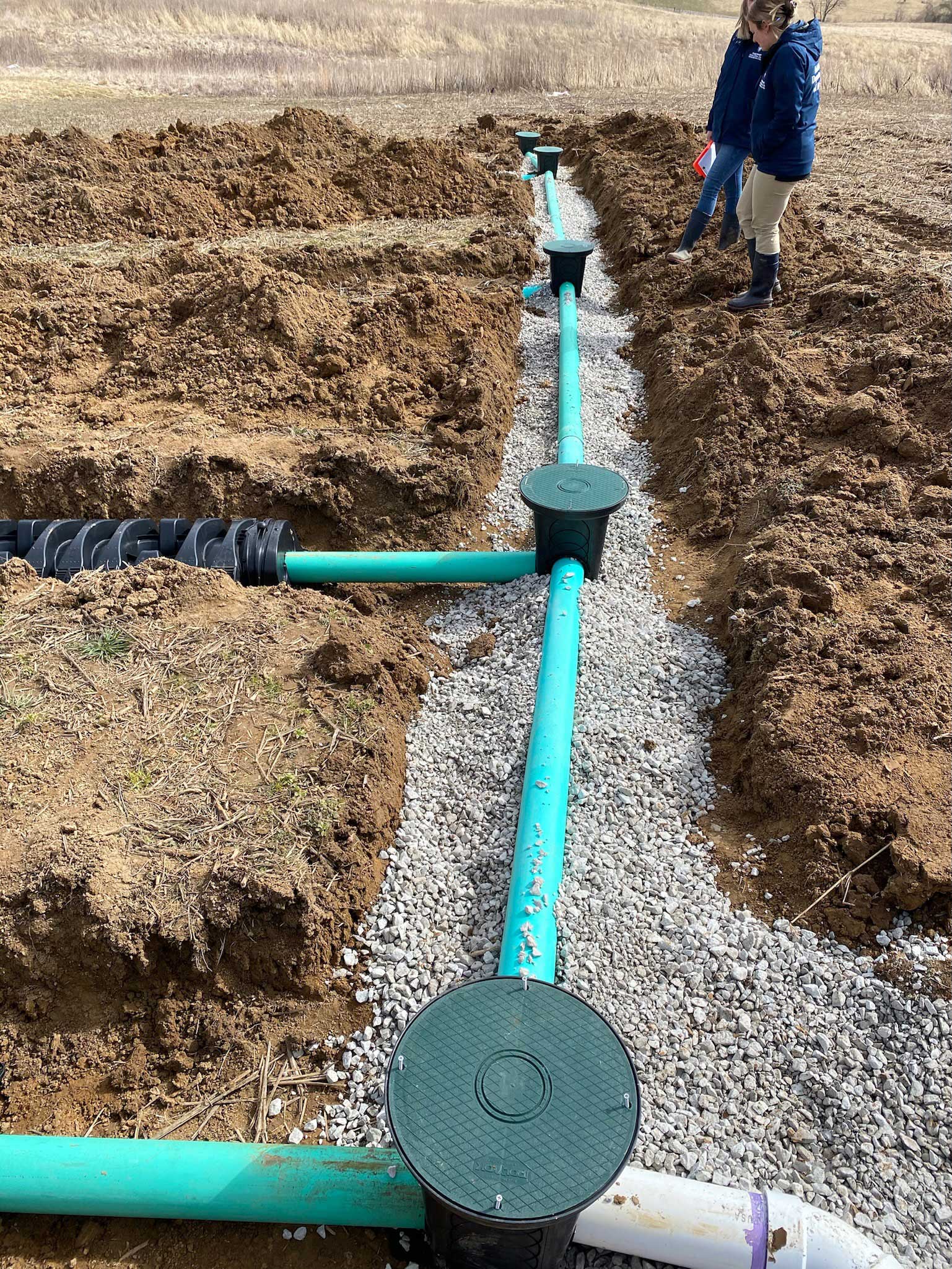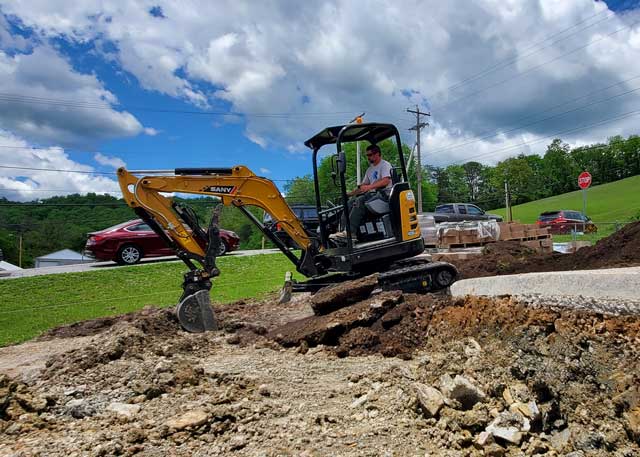Specialist Septic Ohio - Relied On Septic Tank Professionals in Ohio
Specialist Septic Ohio - Relied On Septic Tank Professionals in Ohio
Blog Article
Introducing the Art of Excavation: Pro Tips for Safe and Effective Excavating
As dirt is turned and earth is relocated, the details of excavation expose themselves, requiring a keen understanding of devices, dirt structure, safety procedures, and ecological considerations. The proficiency required to navigate these aspects effectively can indicate the distinction between a successful excavation job and a possible catastrophe.
Relevance of Proper Devices
To make certain the safety and security and effectiveness of any kind of excavation task, utilizing the proper tools is critical. The right devices not only improve performance yet also mitigate dangers connected with digging. Excavation projects vary in range and complexity, ranging from small property landscape design work to large construction tasks. No matter the project dimension, having the right devices can make a substantial difference in the outcome.
These functional makers come in different sizes to match various project needs. Tiny excavators are ideal for smaller sized tasks, while bigger excavators tackle more considerable jobs efficiently.
Apart from excavators, various other critical equipment consists of dump trucks, trenchers, and excavators. Discard trucks are necessary for eliminating and moving excavated products, while plates are utilized for excavating deep and narrow trenches. Excavators excel in tasks that require pressing large quantities of soil or particles. By investing in the appropriate tools, excavation tasks can be finished securely, in a timely manner, and with precision.
Understanding Dirt Composition
An extensive grasp of dirt structure is fundamental for performing excavation projects with accuracy and safety and security. Understanding the different types of dirt is essential as it directly affects excavation techniques, devices selection, and total job performance.
Sand bits are the largest and supply good drainage yet supply little communication. Silt bits are smaller than sand but larger than clay, offering moderate water drainage and communication. Clay bits are the tiniest and supply high communication however poor water drainage. Organic issue, such as decaying plant product, affects dirt fertility and security.
Before starting excavation, carrying out soil examinations to identify its composition and qualities is essential. This details helps in selecting the suitable devices, carrying out safety steps, and creating excavation approaches tailored to the certain dirt conditions - septic ohio. By recognizing soil structure, excavation experts can improve job results while guaranteeing safety and security and adherence to finest techniques
Precaution and Protocols
Recognizing soil composition is the cornerstone upon which precaution and procedures for excavation jobs are constructed, making certain the well-being of workers and the success of the endeavor. There are several essential measures that need to be carried out to mitigate dangers and prevent mishaps. when it comes to safety and security throughout excavation.
Most importantly, before any kind of digging begins, an extensive examination of the site should be performed to recognize any possible threats such as underground energies, unstable soil i was reading this problems, or nearby frameworks that might posture a threat. It is essential to have a proficient individual look after the excavation procedure to ensure that all security methods are complied with strictly.
Moreover, all workers included in the excavation should be appropriately educated in risk-free digging methods and the correct operation of devices. By sticking to these security procedures and methods, excavation jobs can be completed successfully and without event.
Effective Excavation Preparation
When getting started on an excavation task, thorough preparation is important to ensure efficiency, safety and security, and effective outcomes. Reliable excavation preparation involves several key steps that are vital for the smooth execution of the project. The very first step is to carry out a detailed site analysis to determine any possible hazards, such as below ground utilities or unsteady soil problems. This information is crucial for establishing a thorough excavation plan that consists of security steps and take the chance of mitigation techniques.
Once the site evaluation is complete, the next step is to produce a clear timeline and timetable for the excavation tasks. This includes figuring out the series of tasks, devices needs, and manpower allowance. Correct organizing assists prevent hold-ups and ensures that the job remains on track.

Furthermore, interaction among all team participants is vital during the preparation phase. Clear directives, routine updates, and reliable sychronisation are essential for an effective excavation task. By investing time and initiative in thorough planning, excavation teams can substantially improve productivity, reduce threats, and achieve effective outcomes.

Managing Ecological Considerations
With raising focus on environmental sustainability in building and construction techniques, handling ecological factors to consider has ended up being an important aspect of excavation projects. Excavation activities have the potential to affect the surrounding environment with soil erosion, sediment drainage, environment interruption, and contamination of water resources. To minimize these risks, it is important to execute ideal practices that focus on environmental management.

Furthermore, proper waste management is essential to avoid soil and water contamination. Executing procedures for the disposal of dangerous products, recycling of waste products, and decreasing the usage of unsafe chemicals can dramatically lower the ecological effect of excavation jobs. By integrating these techniques right into excavation preparation and implementation, construction firms can make certain that their tasks go to these guys are not only safe and effective but additionally ecologically accountable.
Conclusion
In conclusion, understanding the art of excavation calls for a comprehensive understanding of correct tools, dirt composition, precaution, and effective planning. By adhering to these guidelines and taking into consideration ecological aspects, excavations can be carried out safely and efficiently. It is vital to focus on safety official site and performance in every digging task to make sure successful end results.
As soil is turned and planet is relocated, the ins and outs of excavation disclose themselves, requiring an eager understanding of tools, dirt structure, safety procedures, and ecological considerations.To make sure the safety and effectiveness of any excavation task, utilizing the ideal equipment is critical.A comprehensive understanding of dirt structure is fundamental for carrying out excavation jobs with precision and safety and security. Comprehending the various kinds of dirt is essential as it straight influences excavation techniques, equipment selection, and total project effectiveness. By understanding soil make-up, excavation professionals can improve task end results while guaranteeing security and adherence to ideal techniques.
Report this page